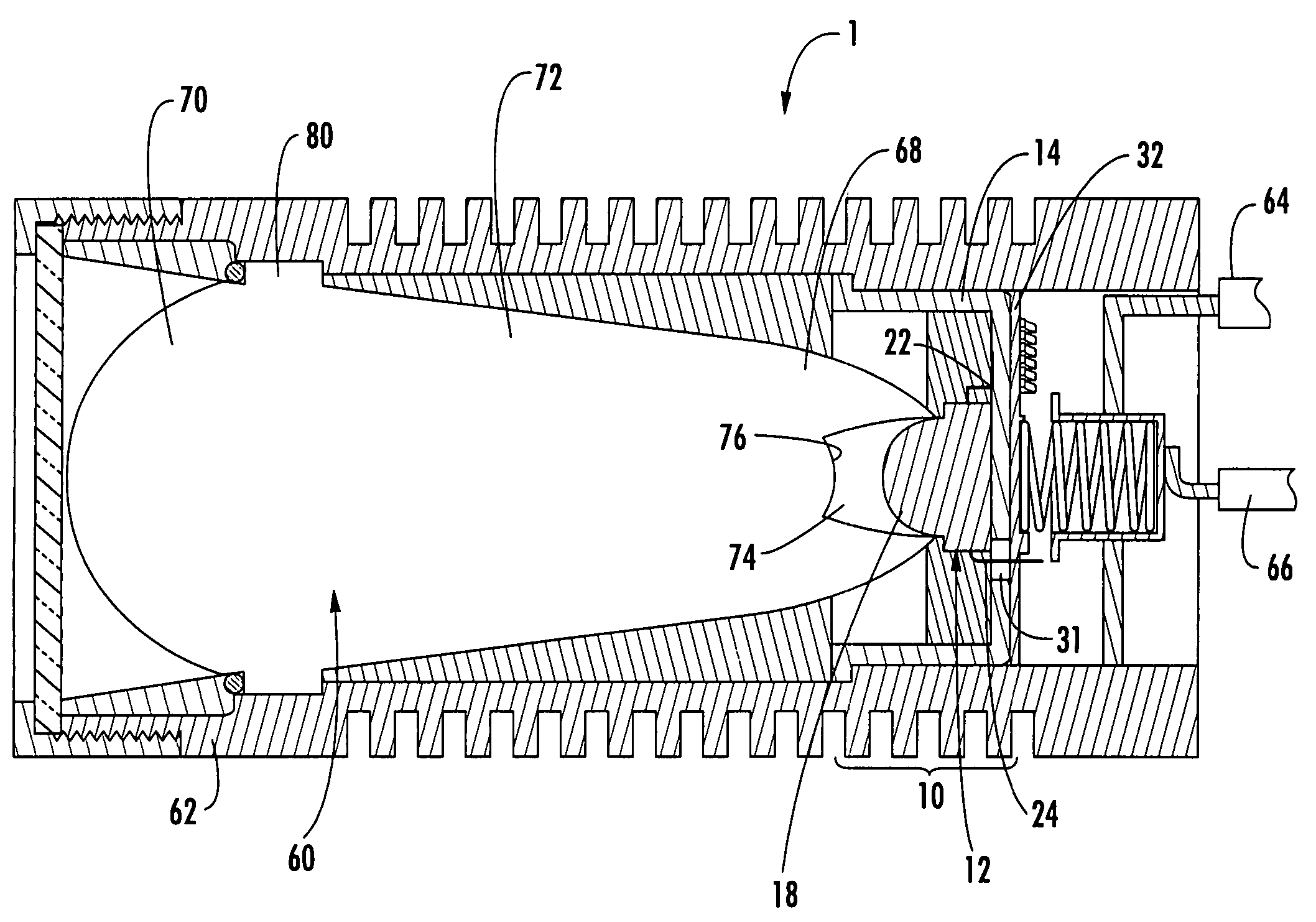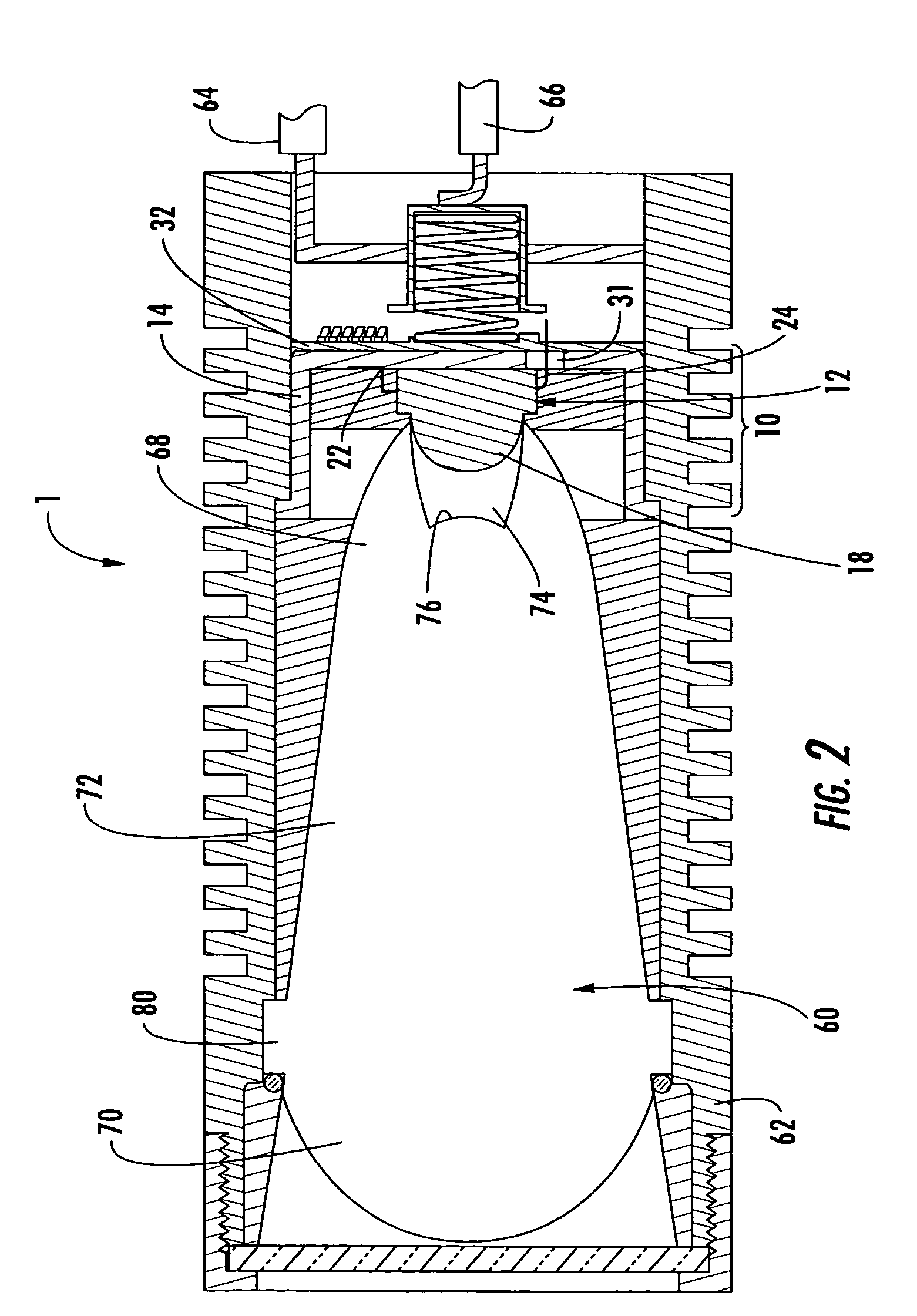Led lighting assembly
a technology for led lamps and assembly parts, applied in the field of new, can solve the problems of high power consumption requirements, manufacturing difficulties, and damage to the emitter chip and the circuitry required to drive the led, and achieve the effect of reducing the cost of manufacturing and assembly
- Summary
- Abstract
- Description
- Claims
- Application Information
AI Technical Summary
Benefits of technology
Problems solved by technology
Method used
Image
Examples
Embodiment Construction
[0046] Referring now to the drawings, the light emitting diode (LED) lighting assembly of the present invention is illustrated and generally indicated at 1. The lighting assembly 1 generally includes an LED and heat sink sub-assembly 10 and an optical assembly 60 that are contained and maintained in spaced relation within an outer housing 62. As will hereinafter be more fully described, the present invention illustrates an LED lighting assembly 1 for further incorporation into a lighting device. For the purposes of providing a preferred embodiment of the present invention, the device 1 will be shown incorporated into a generic housing 62 with two power supply leads 64, 66 extending therefrom, however, the present invention also may be incorporated into any other lighting device such as architectural specialty lighting, vehicle lighting, portable lighting or flashlights. In general, the present invention provides a means for packaging a high intensity LED lamp that includes integral ...
PUM
 Login to View More
Login to View More Abstract
Description
Claims
Application Information
 Login to View More
Login to View More - R&D
- Intellectual Property
- Life Sciences
- Materials
- Tech Scout
- Unparalleled Data Quality
- Higher Quality Content
- 60% Fewer Hallucinations
Browse by: Latest US Patents, China's latest patents, Technical Efficacy Thesaurus, Application Domain, Technology Topic, Popular Technical Reports.
© 2025 PatSnap. All rights reserved.Legal|Privacy policy|Modern Slavery Act Transparency Statement|Sitemap|About US| Contact US: help@patsnap.com



